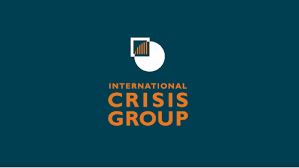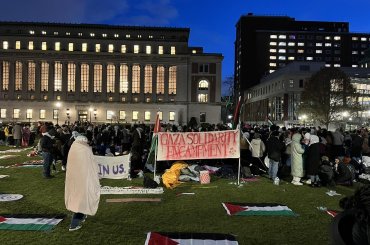Israel is stepping up its efforts to win the “demographic war” in the city of Jerusalem in order to prevent the likely possibility of becoming a minority-Jewish city as early as 2045, according to a recent report from the International Crisis Group (ICG).
The Jerusalem and Brussels-based NGO released the report, entitled “Reversing Israel’s Deepening Annexation of Occupied East Jerusalem” last week, highlighting the new ways that Israel is “cementing its grip on occupied East Jerusalem, further enmeshing the city’s Palestinians while maintaining a Jewish majority within the municipal boundaries.”
Under the guise of social investment, in May 2018 the government passed a five-year plan allocating $530 million to East Jerusalem with the stated aim of “reducing socio-economic inequality.”
But the ICG maintains that the government’s real goal is to further expand Israeli sovereignty over the occupied territory by cataloguing all of East Jerusalem’s lands in the Israel Land Registry, and imposing Israeli curricula on the area’s Palestinian schools.

One of the most concerning “schemes”, the group noted, is the government’s plans to redraw the city’s municipal boundaries to exclude major Palestinian neighborhoods in occupied East Jerusalem that are located East of the Separation Wall.
Overcrowded and underserved Palestinian areas like Kafr Aqab, Shufat refugee camp, Anata, al-Sawahra and al-Walaja, that are under Jerusalem municipality jurisdiction but beyond the wall, may be removed and placed in separate “Israeli administrative units” outside of Jerusalem’s jurisdiction.
These measures, along with the enforced curricula and land registration plans, the group says, would further entrench Israel’s 1967 annexation of East Jerusalem, and “risks deepening conflict in Jerusalem.”
And while the five-year plan is already in its second year, the ICG warned that moves to excise several neighborhoods East of the Wall could happen as early as September of this year, after the latest rounds of elections come to a close and a new governing coalition is formed.
Another right-wing coalition headed by Benjamin Netanyahu would surely fast track such plans. The group warned, however, that any government, regardless of the coalition, will “almost certainly” move forward with the plans.
“All stakeholders opposed to such a move should do what they can to halt these policies as a first step toward reversing Israel’s de facto annexation of East Jerusalem,” the ICG stated.
Putting a band-aid on the deeper issues
In 1967, the year Israel occupied East Jerusalem and the West Bank, the population ratio of Israeli Jews to Palestinians in Jerusalem stood at 74:26, the ICG reported.
Three years ago, in 2016, the same ratio stood at 62:38, signaling a dwindling Jewish majority in the city that, since its founding, the Israeli state has poured significant political, economic, and cultural resources due to its significance.
At the same time, for the past five decades, Israeli authorities have actively worked to minimize Palestinian populations in the city by, essentially, making life as impossible and as difficult as they can.
Through racist housing policies and building codes, policies of home demolitions, over-policing of Palestinian communities, and the underallocation of municipal funds and services — despite Palestinians being forced to pay taxes to the municipality — Palestinian areas of the city have been turned into poor and overcrowded neighborhoods.
Despite all the attempts to force Palestinians out of the city, they have remained.
In addition, rapid settlement expansion in East Jerusalem combined with excision of Palestinian communities, experts say, is one of the most effective tactics for the Israeli government to maintain a Jewish majority in the city, which they consider to be the political and religious center of the nation.
Jerusalem Affairs Minister Ze’ev Elkin has proposed transforming the excised areas into separate local municipal councils. If successful, that excision would turn the demographic ratio to 69 percent for Jewish Israelis and a 31 percent Palestinian population.
If that were to happen, the ICG wrote, tens of thousands of Palestinian residents of those areas would be at risk of losing their status as Israeli residents, meaning they could lose access to Israel and East Jerusalem.
But, excision plans have received some pushback from other right-wing Knesset ministers, who believe it would pave the way for the future partition of the city, and give partial control of Jerusalem to the Palestinian Authority.
Instead, the ICG reported, the five-year economic investment plan for East Jerusalem has been “met with fanfare,” due to the fact that its politically less risky than excision, but would still ensure “continued Israeli rule over East Jerusalem and continued Israeli rejection of either a PA presence in Jerusalem or the establishment of Palestinian municipal self-governance.”
Through allocating more funds for services and activities in East Jerusalem, the Israeli government would be able to expand and deepen its municipal control over the city’s Palestinian neighborhoods.
The Israeli proponents of the plan, the ICG noted, “see it as an element of a long-term policy to remould the national identity of Palestinian Jerusalemites from ‘Palestinian’ to being ‘Arab of Jerusalem.’”
But while allocating more funds and services for Palestinians in Jerusalem has been a longtime demand of residents, activists, and human rights groups, the ICG says the plan falls short of actually closing the socio-economic gap between the city’s Jewish and Palestinian residents.
“$106 million per year over five years falls far short of the amount needed to address gaps accumulated during more than 50 years of neglect,” the group said, adding that unless the state significantly increases the overall sum, future similar plans will also fail, and the Jewish population will continue “advances in prosperity more rapidly than the Palestinian one.”
Consequences and implications
The Israeli government’s plans for East Jerusalem, in addition to its wider “Greater Jerusalem” plans threatening to annex large portions of the West Bank, have the potential “to significantly escalate tensions in Jerusalem and in the Israeli-Palestinian conflict more broadly,” the ICG said in its report.
The political, cultural, and security implications of the five-year plan are wide-ranging.
Palestinians see the imposition of Israeli curricula in East Jerusalem schools as a threat to their national identity, and the addition of their neighborhoods to Israel’s land registry as putting them at greater risk of home demolitions and land confiscations.
“Carrying out these policies will further heighten tensions between East Jerusalemites and the government of Israel,” the ICG said, “as well as between Palestinians who cooperate with these controversial steps and Palestinians who do not.”
The plan could also “stoke tensions” between the PA and Israel, the group said, as it will “push the PA toward greater advocacy concerning the Jerusalem issue.”
Israel’s more than 50-year neglect of East Jerusalem has led the territory to suffer from “socio-economic degradation… increasing criminality, drug use and prostitution, as organised Palestinian political activity has withered,” the ICG reported.
This five-year-plan is unlikely to solve any of those problems, and could actually exacerbate the situation in the communities that lie beyond the Separation Wall, as the ICG says they are unlikely to even receive much of the allocated funds.
What the plan is likely to do, the group says, is “exacerbate the conflict in and over Jerusalem,” doing more harm than good to the more than 350,000 residents of East Jerusalem, and set a “perilous precedent” for annexation in the West Bank.
Without resolving the competing political claims to Jerusalem, the ICG said, there can be no Israeli-Palestinian peace.



→ cementing its grip on occupied East Jerusalem
All of al-Quds, not just the eastern part, is under Zionist occupation.
What is the opinion of our guru, Jared Kushner?
YUMNA PATEL- “Under the guise of social investment, in May 2018 the government passed a five-year plan allocating $530 million to East Jerusalem with the stated aim of “reducing socio-economic inequality.”
This is part of a broader attack on the Palestinians by US/Israel. An excellent and highly relevant article by Jonathan Cook is linked below. Make no mistake, this is a bipartisan policy reflecting a broader imperial geostrategy. The empire is on an accelerating rampage and chaos is increasingly the new normal.
“”The PA’s crisis comes as no surprise. Congress helped initiate it by passing the Taylor Force Act in March 2018. It requires the US to halt funding to the PA until it stops paying stipends to some 35,000 families of Palestinians jailed, killed or maimed by Israel.
Previous US administrations might well have signed a waiver to prevent such legislation from going into effect – just as presidents until Trump blocked a congressional law passed in 1995 demanding that the US move its embassy to Jerusalem.
But the Trump White House is not interested in diplomatic face-saving or reining in the pro-Israel zealotry of US legislators. It fervently and explicitly shares the biases that have long been inherent in the US political system.” (Jonathan Cook) https://dissidentvoice.org/2019/06/trump-enjoys-bipartisan-support-for-his-plan-to-eradicate-the-palestinian-cause/#more-93423